Mannlicher rifles and carbines of the 90s of the XNUMXth century

Berthier carbine 1890 Photo by Allen Dobress
that they were put to flight,
and burn the camp;
for the rising smoke showed
what happened.First Book of Maccabees, 4:20
People and weapon. For a long time, people used black black powder, which caused the battlefields to be covered in thick smoke, in which nothing could be seen. The new multi-shot rifles that appeared in the late 60s of the XNUMXth century produced especially a lot of smoke. The result was a vicious circle - more cartridges in the magazine and more frequent shooting - more smoke around the shooter.
That is why the appearance of the Nicolas Lebel Mle 1886 rifle made such an impression. Moreover, it turned out that the new gunpowder not only produces practically no smoke and soot, but it is also much more powerful! In the previous article, we already talked about how they reacted to the new rifle in Germany, where the “commission rifle” was quickly adopted.
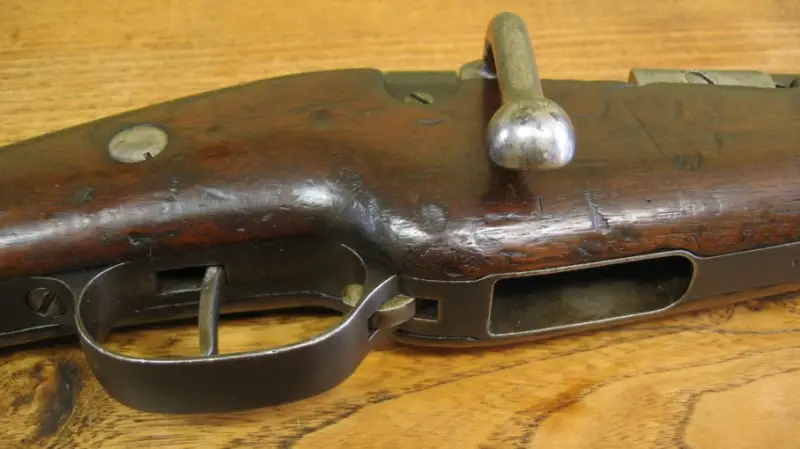
Berthier carbine 1890. Hole for ejecting a pack from the magazine. Photography by Allen Dobress
However, the French did not stand still, especially after new cavalry carbines of the same system entered service with their potential enemy, while the French cavalrymen, unlike the infantrymen, still had to be content with single-shot Gra carbines.
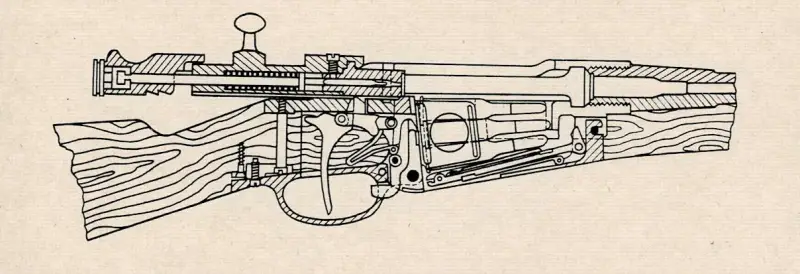
Schematic diagram of the Berthier carbine
And the reason for such a strange situation turned out to be simple: the Lebel rifle, turned into a carbine, was inconvenient for the riders to load.
Andre Virgil Paul Marie Berthier was able to solve the problem by offering the government a carbine of his own design. At the same time, he also used Mannlicher’s loading system. True, its magazine could be loaded in packs of only three rounds.
Like Mannlicher, a spring-loaded lever entered the slot of the pack, pressed on the cartridges and fed them to the dispensing line into the breech. The empty clip, due to gravity, fell out through the hole in the bottom of the magazine. Surprisingly, a pack of only 3 rounds was approved by the cavalry only because with it the magazine practically did not protrude from the stock and did not interfere with balancing or handling the carbine.
The Berthier carbine was adopted by the French army on March 14, 1890, but the short-barreled version of the Berthier rifle was adopted only in 1907. Both models were produced in France in large quantities: more than a million Berthier rifles and carbines were produced not only by French state enterprises, but also by civilian industry. That is, in this sample of small arms, the Mannlicher batch loading system showed itself in all its glory and was then used for a long time together with carbines and Berthier rifles produced in France.
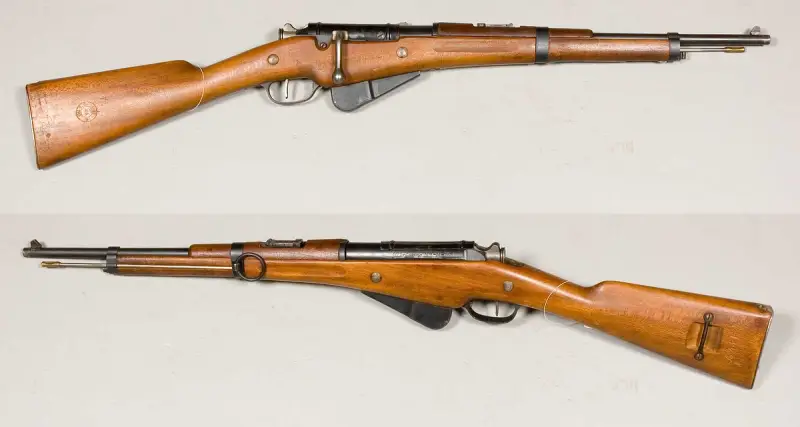
A 1916 Berthier carbine with a five-round magazine. Army Museum, Stockholm
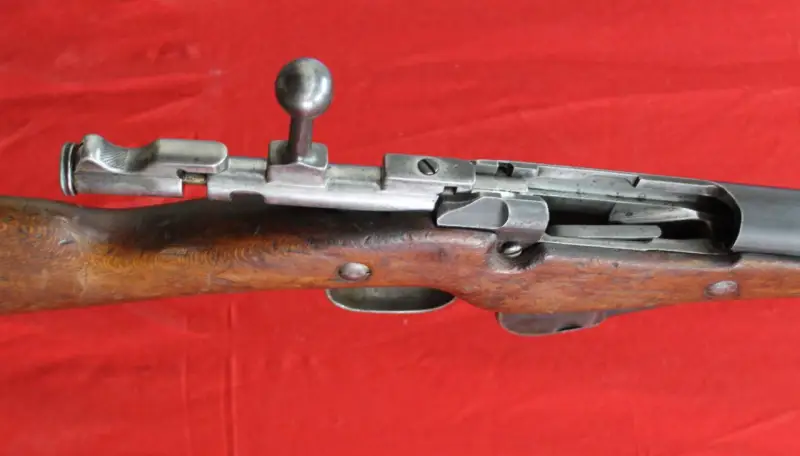
Gate. Photo by the author
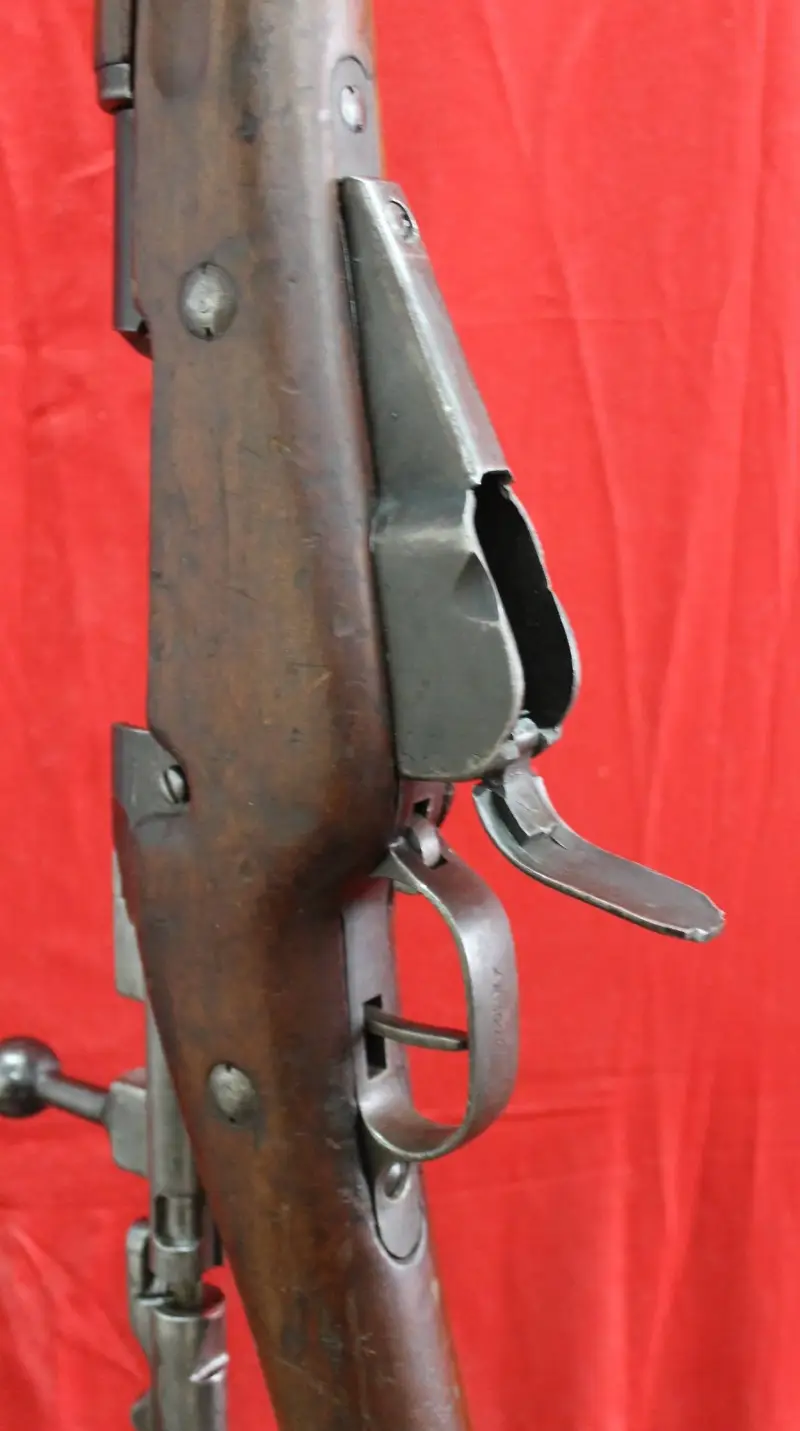
There was no longer a hole on the magazine of this carbine. But there was a spring-loaded lid that protected it from dust and dirt. Each subsequent inserted pack pushed out the previous one! Photo by the author
But even before the Berthier carbine appeared, the Mannlicher carbine of the 1893 model entered service in Switzerland. It used a direct action bolt that was virtually identical to the bolt action of its M1890 carbine and M1895 rifle.
First, the Swiss military traditionally tried to shorten their Schmidt-Rubin 1889 rifle. But it turned out that it was inconvenient for riders to use, and it took too long to load it. We tested a number of carbines and chose the Mannlicher design because of its compactness and the speed of reloading the magazine.

Swiss carbine 1903
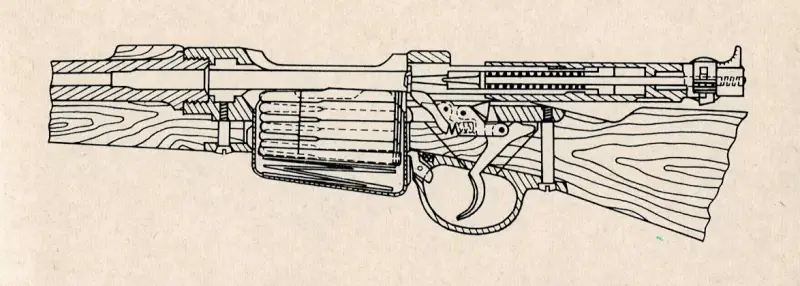
Schematic diagram of the Swiss carbine 1903
True, there is an opinion that Swiss soldiers hated these carbines, since their bolts were difficult to disassemble. And it was difficult to produce them. Therefore, they were later replaced with the Schmidt-Rubin model 1905 cavalry carbine.
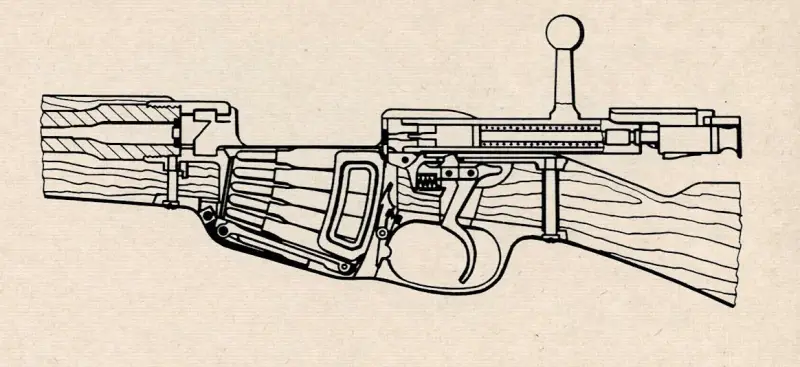
Diagram of the Romanian Mannlicher rifle
In the same 1893, the Mannlicher rifle was adopted by the army of the Romanian kingdom and was used from 1893 to 1938. The Model 1893 was chambered in 6,5x53R, also called "6.5x53,5mm Romanian".
The bolt was designed so that it could not be inserted into place if assembled incorrectly and, unlike the Austrian M1895 Mannlicher rifle with a direct action bolt, the Romanian rifle was equipped with a conventional rotating bolt.
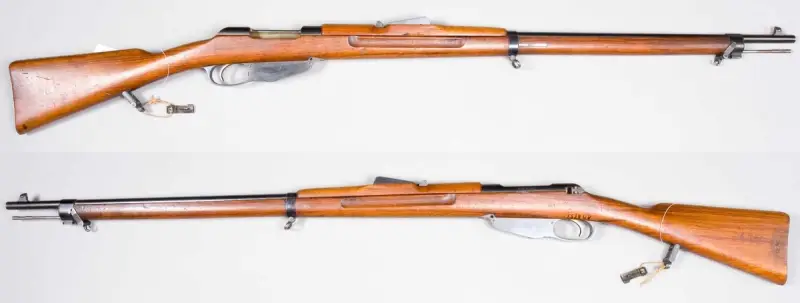
Mannlicher rifle model 1893. Army Museum, Stockholm
A 98-centimeter long carbine version with a curved bolt handle was also presented. Unlike rifles, bayonets could not be attached to carbines. But, as it turned out, Romanian cavalry units fight more on foot, and they need bayonets. As a result, 20 carbines received the bayonets of cavalry captain Botez.
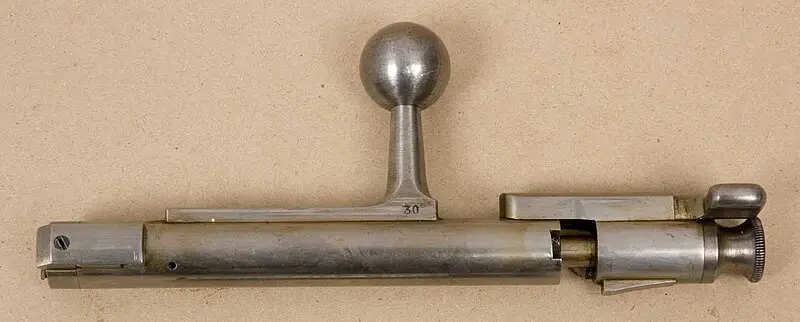
The bolt of the Mannlicher M1893 rifle. Army Museum, Stockholm
The production of Mannlicher rifles and carbines for the Romanian army was quite massive: from 1893 to 1907, more than 100 were delivered to the army. After the end of the Second Balkan War, Romania ordered another 000 rifles, but managed to receive only 200, since the First World War began.
The rifles went into service with the Austro-Hungarian army, where they were designated “6,5 mm M.93 Rumänisches Repetitier Gewehr”. Some of the rifles were eventually chambered for the 8×50 mm Mannlicher cartridge and handed over to the Austrian Landwehr.
When Romania entered the war in 1916, its army had approximately 373 rifles and 000 carbines. At the end of the war, the Romanian army had only 60 rifles in service - the rest were either destroyed in battle or became enemy trophies.
After the war, M93 rifles were given as war reparations to Czechoslovakia and Yugoslavia. Moreover, some of the rifles had a caliber of 8 mm. Yugoslav rifles were captured by the Germans during World War II and given to collaborators.
Romanian Mannlichers also took part in the Spanish Civil War on the side of the Spanish Republicans and... ended up as trophies to the nationalists. It is unknown who supplied them to Spain and how.
Performance characteristics of the Romanian rifle of 1893:
Total length – 1 mm
Barrel length - 725 mm
Weight without bayonet – 3,85 kg
Magazine capacity - 5 rounds
Cartridge weight – 22,5 g
Bullet weight – 10,2 g
Powder charge weight – 2,35 g
Initial speed at the muzzle – 740 m/s
Maximum sighting range – 2 m
Bullet energy – 2 J
Holland was also looking for a not too expensive and fairly simple multi-shot rifle for its army. Therefore, in 1892, the Dutch purchased a small batch of 1892 rifles (“Romanian model”), and after testing it, the rifle was approved and put into service. This rifle was officially designated in Holland as the Geweer M. 95 on December 4, 1895.
There were no significant differences between the Romanian and Dutch models, except that the Dutch rifle was slightly longer and had a stock made of noble walnut. The 6,5 mm caliber was chosen due to the greater amount of ammunition a soldier could carry compared to the 7,5 mm and 8 mm calibers.
It is interesting that Leon Nagant’s rifle, the same one that he presented at the competition in Russia, also had a chance to compete with the Mannlicher rifle in Holland. However, here too he was defeated. And this rifle remained in service with the Dutch army until 1945. Until 1901, the production of rifles was carried out in Austria, but since 1902 the Dutch themselves learned to make them.
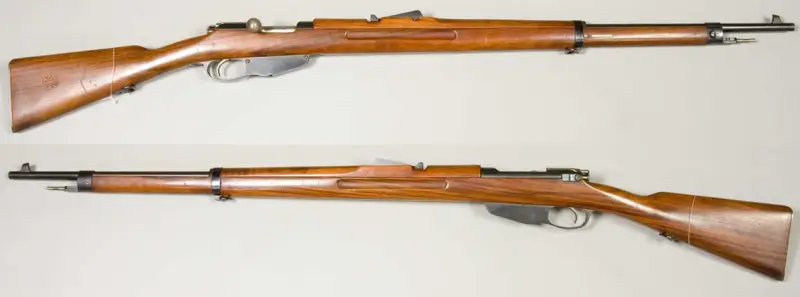
Dutch Mannlicher M1895 Army Museum, Stockholm
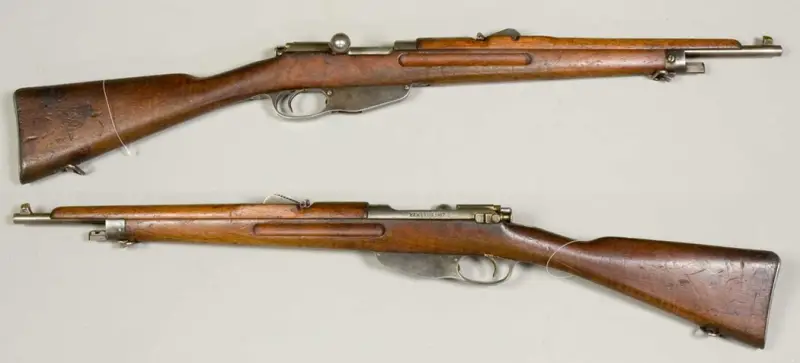
Dutch carbine "Mannlicher" M1895. Army Museum, Stockholm
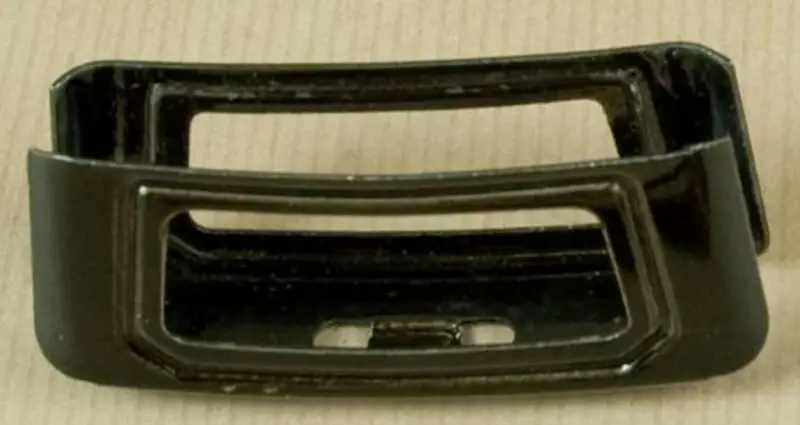
Cartridge pack for the Mannlicher rifle for the Dutch army. Army Museum, Stockholm
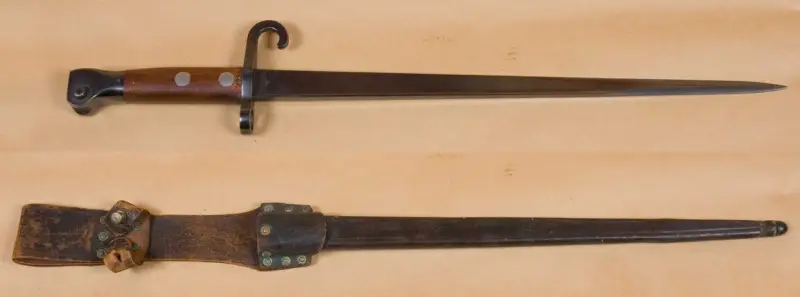
Bayonet for a Dutch rifle 1895
The rifle was the standard weapon of the Royal Netherlands East Indies Army (KNIL) until the Japanese invasion. M.95s were later used by both sides during the Indonesian National Revolution, and after the end of the war, the KNIL transferred the remaining rifles to the new Indonesian Armed Forces.
In the 1950s, the Indonesian military converted its M.95 rifles and carbines to chamber the British .303 cartridge and added a muzzle brake to the carbine. The M.95 remained in Dutch colonial service until at least 1955 and was used by the Suriname police.
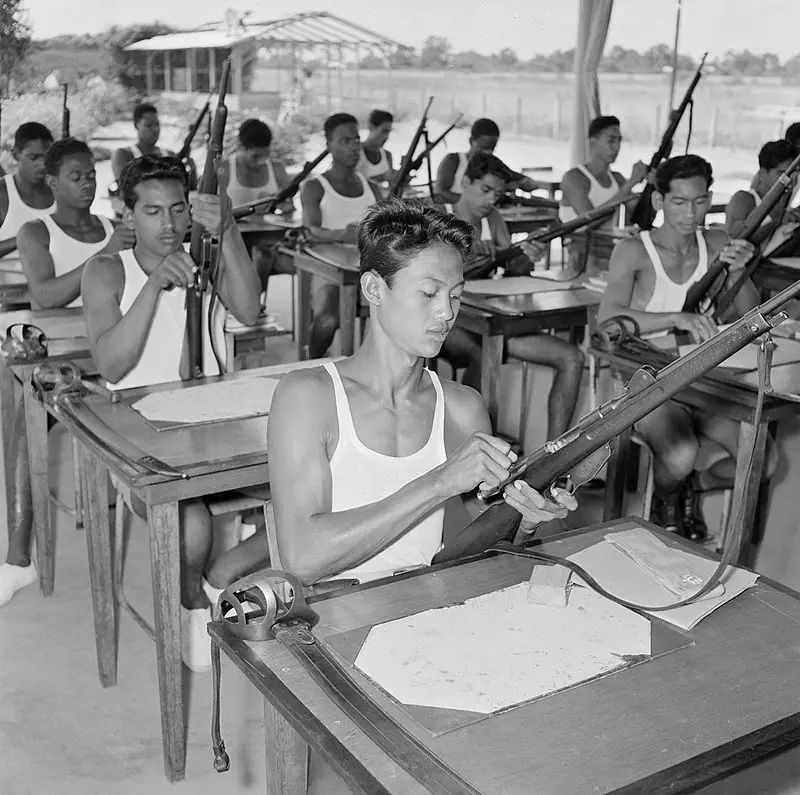
Recruits being trained to use Mannlicher carbines at a police school in Suriname, 1955. But what kind of broadsword lies nearby... Photo by the National Archives of Holland
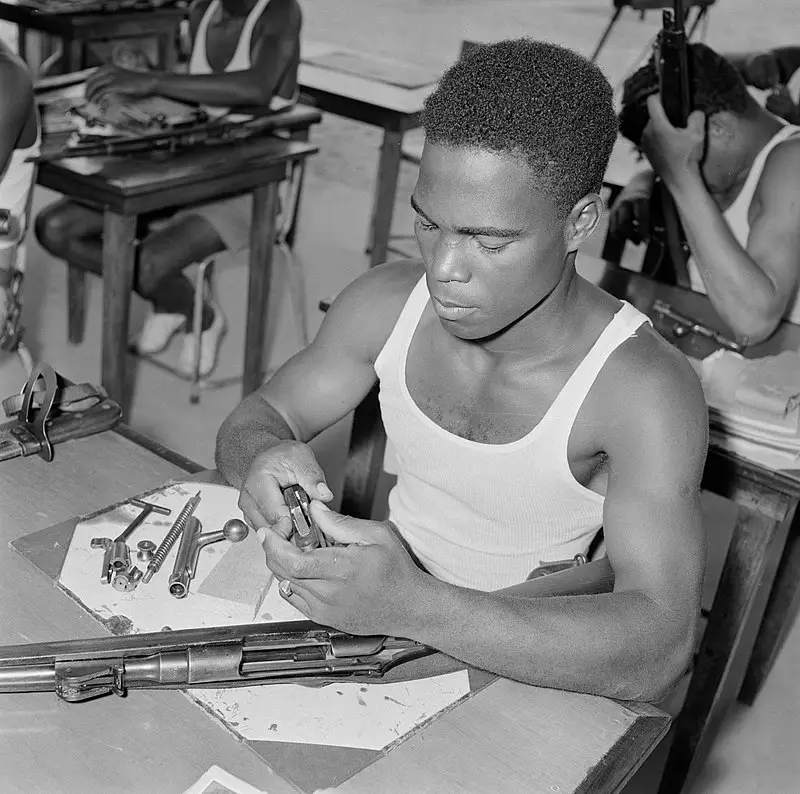
Assembles and disassembles the shutter...
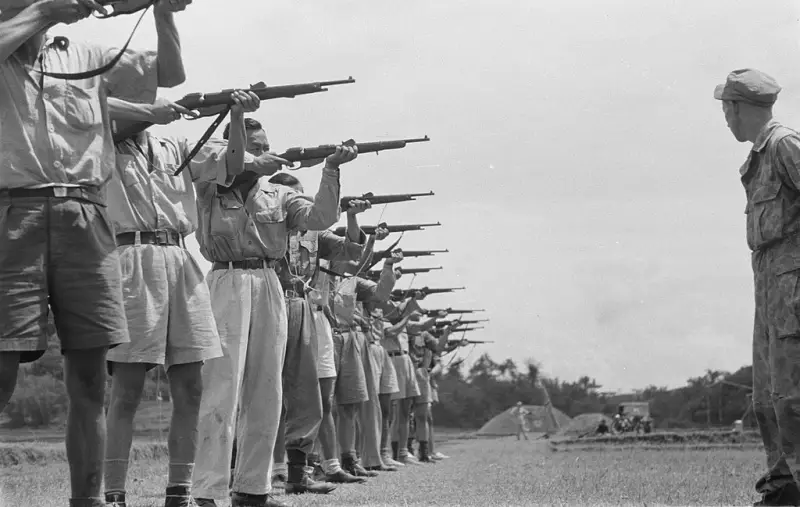
Bandung Chinese Security Corps recruits Pao An Thuy during a shooting. Photo from the Dutch National Archives
So the Mannlicher rifle of the 1893 model was destined for a long military life.
But his 1895 rifle, with which Austria-Hungary entered the First World War, turned out to be even more advanced. But we’ll tell you about it next time...
Information